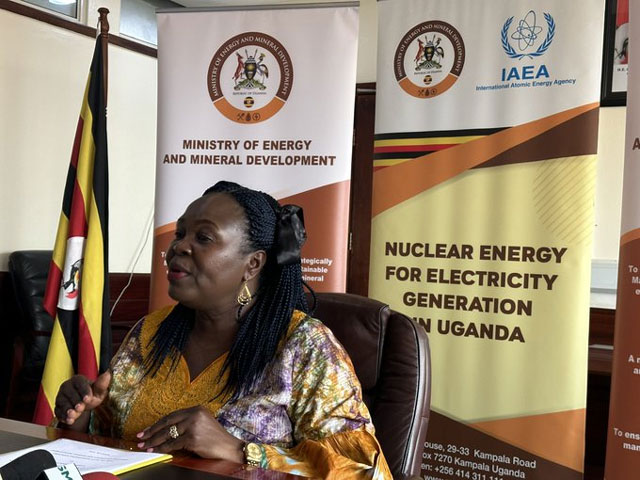 Ugandan Energy & Minerals Minister Ruth Nankabirwa Ssentamu said in a statement that Uganda expects to start generating at least 1000 MWe from nuclear power by 2031. This is part of Uganda’s moves to diversify its sources of electricity and accelerate its energy transition in response to climate change.
Ugandan Energy & Minerals Minister Ruth Nankabirwa Ssentamu said in a statement that Uganda expects to start generating at least 1000 MWe from nuclear power by 2031. This is part of Uganda’s moves to diversify its sources of electricity and accelerate its energy transition in response to climate change.
Nankabirwa who was addressing journalists ahead of the African Nuclear Business Platform to be hosted by Uganda, noted that Uganda’s population, economic growth, and rising social needs require sustainable development of energy resources to meet the country’s Vision 2040 and National Development Plans (NDP) goals.
Both Vision 2040 and the NDP identify electricity and modern energy as critical drivers of the socio-economic transformation that will shift the country to an industrialised and predominantly urban society. Studies conducted by the Ministry indicate that the country’s energy sector, which comprises electricity generation from hydro, biomass, geothermal, solar, and peat, cannot meet the targets envisaged under Vision 2040.
The first nuclear project, Buyende NPP, would be located at Buyende, about 150 km north of the capital Kampala. “Preparation to evaluate the Buyende NPP site is ongoing to pave the way for the first nuclear power project expected to generate 2,000 MWe, with the first 1000 MWe to be connected to the national grid by 2031," Nankabirwa said.
"Uganda is making firm steps to integrate nuclear energy into the electricity generation mix to ensure energy security and provide sufficient electricity for industrialisation."
The Ministry of Energy & Mineral Development has warned residents of Buyende District not to sell their land to speculators who are targeting securing it to benefit from government compensation schemes before the UGX34,000bn ($9bn) nuclear energy power plant project is built.
The government earlier identified Buyende as one of the eight sites for the construction of a 2,000 MWe nuclear project in Uganda’s electricity generation mix after pre-feasibility studies in 2019. Other potential sites include Nakasongola and Lamwo Districts among others.
In December 2021, the International Atomic Energy Agency (IAEA) endorsed Uganda’s nuclear energy power plant development following a successful review of the country’s nuclear infrastructure.
According to Emmanuel Wamala, Assistant Commissioner for Nuclear Fuel & Radioactive Waste, the project will need an estimated 1 square mile of land for the nuclear plant and additional 34 square miles for the emergency zone.
Uganda’s nuclear plans are being led by the nuclear energy department at the Ministry of Energy in collaboration with the Atomic Energy Council (AEC) headed by Dr Akisophel Kisolo. Sources AEC told URN that a number of Ugandans have been sent abroad for training in nuclear power technology, regulation, and oversight. “Those people are going to make the leadership team in effectively regulating our nuclear power programme in the country,” the source said.
About 30 African countries are currently considering nuclear power as part of their energy mix. Egypt, Ghana, Kenya, Morocco, Niger, Nigeria, and Sudan have already engaged with the IAEA to assess their readiness to embark on a nuclear programme. Construction of Egypt’s first NPP is already underway. Algeria, Tunisia, Uganda, and Zambia are also moving ahead with plans to develop nuclear power.
Image: Ugandan Energy & Minerals Minister Ruth Nankabirwa Ssentamu (courtesy of Uganda Independent)






